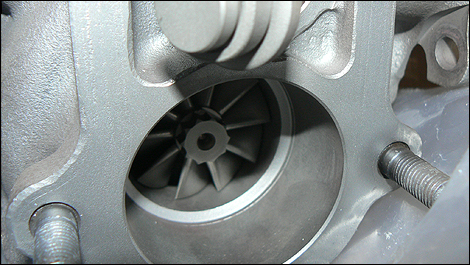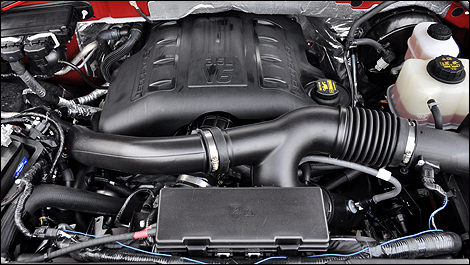“An engine equipped with a turbo system can use a smaller displacement and produce the same amount of torque and power as a bigger engine. The turbocharged engine runs on higher loads at each specific load point in the speed vs. load map—which means lower pumping losses and lower fuel consumption for each load point.”
 |
| Photo: Justin Pritchard/Auto123.com |
In non-engineer speak, that means more snap and less gas.
Turbocharged engines offer the additional benefit of massive low-end torque. This makes the powerplant fun to drive-- but can also help save fuel by using fewer revs to get the vehicle moving.
Bjornsson explains “it’s also important to take advantage of the increased low-end torque by using the correct gear shift schedule and an optimized gear ratio for each specific vehicle. By up-shifting early, fuel consumption is further reduced”.
Compared to Volvo, Ford and Hyundai are relative newcomers to the turbocharged engine scene-- but working tightly with turbocharger suppliers helps ensure customers get a boosted engine that’s as durable and worry-free as any other. Ford’s Christine Hollander talks about finding the right turbocharger for use in their new and expanding range of ‘
EcoBoost’ engines.
“We do not build turbochargers. Instead we rely on the industry's best and most experienced turbo manufacturers-- such as Honeywell Turbo Systems and Borg Warner. We work closely with our suppliers to ensure that the turbos we buy are optimized for our engines”.
After the turbocharger is selected, engines are put through hell and back to ensure they’ll perform for the long run. Hollander continues “we evaluate all new components and choose the ones that deliver the best combination of performance, value, reliability and durability to our customers. For instance, our 3.5 litre EcoBoost engine has been tested in weather extremes duplicating conditions from the Arctic Circle to Death Valley. Testing has replicated more than 1.6 million miles of customer usage”.
 |
| Our 3.5 litre EcoBoost engine has been tested in weather extremes duplicating conditions from the Arctic Circle to Death Valley. (Photo: Mathieu St-Pierre/Auto123.com) |

